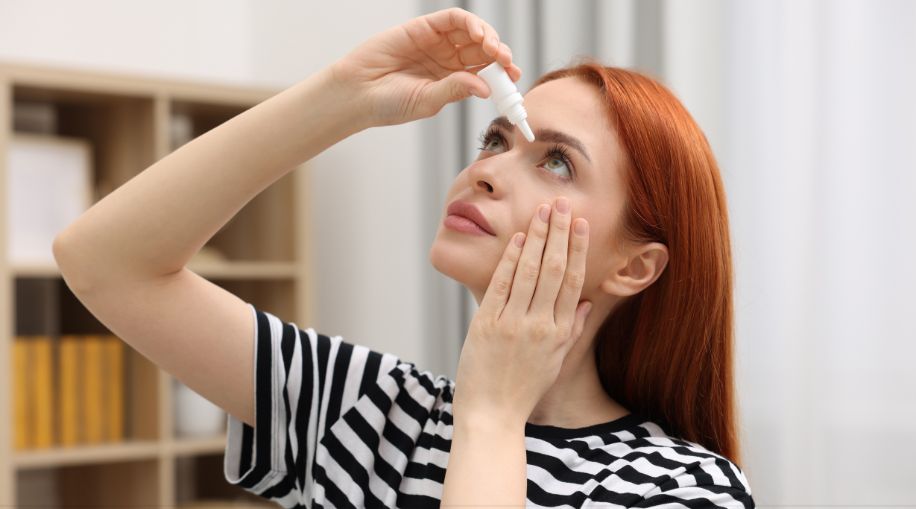How to Treat Dry Eyes
A range of treatment options exists to address dry eyes, from simple home remedies to medical treatments like Restasis, a medication used to treat dry eye disease.
1. Restasis
Restasis works by reducing inflammation in the tear glands, which helps them produce more natural tears. Unlike artificial tears that provide temporary relief, Restasis targets the root cause of reduced tear production.
It is typically used twice daily and may take several weeks to show noticeable improvement. This treatment is especially helpful for people with dry eye caused by conditions like Sjögren's syndrome or other inflammatory disorders.
2. Xiidra (Lifitegrast)
Xiidra is an FDA-approved eye drop designed to treat the symptoms of dry eyes by reducing inflammation. It blocks certain proteins that cause inflammation in the eye, offering relief and improving tear production. Users generally apply Xiidra twice daily, with many reporting relief within a few weeks. Although mild side effects may occur, such as temporary burning or a metallic taste, Xiidra is a preferred choice for chronic cases of dry eyes.
3. Miebo (Perfluorohexyloctane Ophthamic Solution)
Miebo is an innovative eye drop designed to treat dry eyes by stabilizing the tear film, specifically targeting the lipid (oil) layer to prevent tears from evaporating too quickly. Unlike many other dry eye treatments, Miebo directly addresses the cause of tear film instability associated with meibomian gland dysfunction, a common cause of dry eyes. Miebo provides lasting moisture and relief from symptoms like irritation, burning and redness by restoring balance to the tear film.
4. Artificial Tear Drops and Lubricating Gels
For those with mild symptoms, artificial tears are often the first line of defense. These over-the-counter (OTC) drops provide temporary relief by adding eye moisture. Artificial tears come in various formulations, including preservative-free options that are ideal for those with sensitive eyes or who need frequent applications. Lubricating gels and ointments are thicker and can offer longer-lasting moisture, especially helpful for overnight use. They’re a convenient way to get quick relief, although their effects may not last as long as prescription options.
5. Meibomian Gland Expression Therapy
In many cases, dry eyes are due to a blockage in the meibomian glands, the oil-producing glands on the edge of the eyelids. Blocked glands lead to unstable tear film, which evaporates quickly. Meibomian gland expression is an in-office procedure where an eye specialist uses gentle heat and pressure to unblock these glands, allowing the natural oils to flow freely and stabilize the tear film. This procedure offers long-lasting relief and is recommended for those with meibomian gland dysfunction (MGD) as a primary cause of their dry eyes.
6. Punctal Plugs
For individuals who suffer from rapid tear evaporation, punctal plugs are a viable solution. These tiny devices are inserted into the tear ducts to prevent tears from draining too quickly. By keeping more moisture on the eye’s surface, punctal plugs help to alleviate symptoms of dryness. There are two types: temporary plugs, which dissolve over time, and permanent plugs, which provide long-term relief. Many people find this treatment highly effective, especially when used alongside other therapies.
7. Warm Compresses and Lid Hygiene
Practicing good eyelid hygiene can make a significant difference in managing dry eyes, especially for those with mild to moderate symptoms. Warm compresses applied to the eyelids can help loosen clogged oils in the meibomian glands, improving the quality of the tear film. Daily eyelid scrubs with a gentle, hypoallergenic cleanser or special lid wipes can help reduce bacterial buildup, prevent inflammation and ensure healthy tear production. This simple at-home routine is effective for managing symptoms and preventing worsening dryness.
8. Moisture-Retaining Eyewear
For those who experience dry eyes due to environmental factors, such as air conditioning, heating or windy climates, moisture-retaining eyewear (sometimes called “moisture chamber" glasses) can be extremely beneficial. These glasses have a protective seal around the lenses that reduces air flow around the eyes, helping to retain moisture and prevent evaporation. They are available in different styles, from full goggles to more discreet eyewear, and can be used both indoors and outdoors.
9. Nutritional Supplements
Dietary supplements, particularly omega-3 fatty acids, play a role in promoting eye health and reducing symptoms of dry eyes. Omega-3s, found in fish oil and flaxseed oil, help reduce inflammation and improve the quality of the tear film. Adding omega-3 supplements to your diet, or consuming foods rich in omega-3s like salmon, walnuts and chia seeds, can naturally support tear production. This treatment is easy to incorporate into daily routines and can be used alongside other therapies.
10. Autologous Serum Eye Drops
Autologous serum eye drops may be recommended for severe cases of dry eyes unresponsive to conventional treatments. These eye drops are custom-made using the patient’s own blood serum, which contains growth factors, proteins and other essential components that closely mimic natural tears. Autologous serum eye drops help nourish the eye’s surface and improve tear stability, offering relief for chronic and severe dry eye sufferers. This treatment requires a prescription and is made in specialized labs, often recommended for patients with advanced symptoms.
11. Environmental Adjustments and Lifestyle Changes
Dry eyes can often be managed with some basic lifestyle adjustments and awareness of environmental factors. Limiting screen time and taking breaks to rest your eyes can help reduce strain and dryness. Using a humidifier indoors can also help maintain moisture in the air, especially in dry or air-conditioned environments. Additionally, staying hydrated by drinking plenty of water is essential for overall eye health and can prevent symptoms of dryness. Avoiding direct exposure to fans or heaters, as well as wearing sunglasses outdoors, can further support eye comfort.
